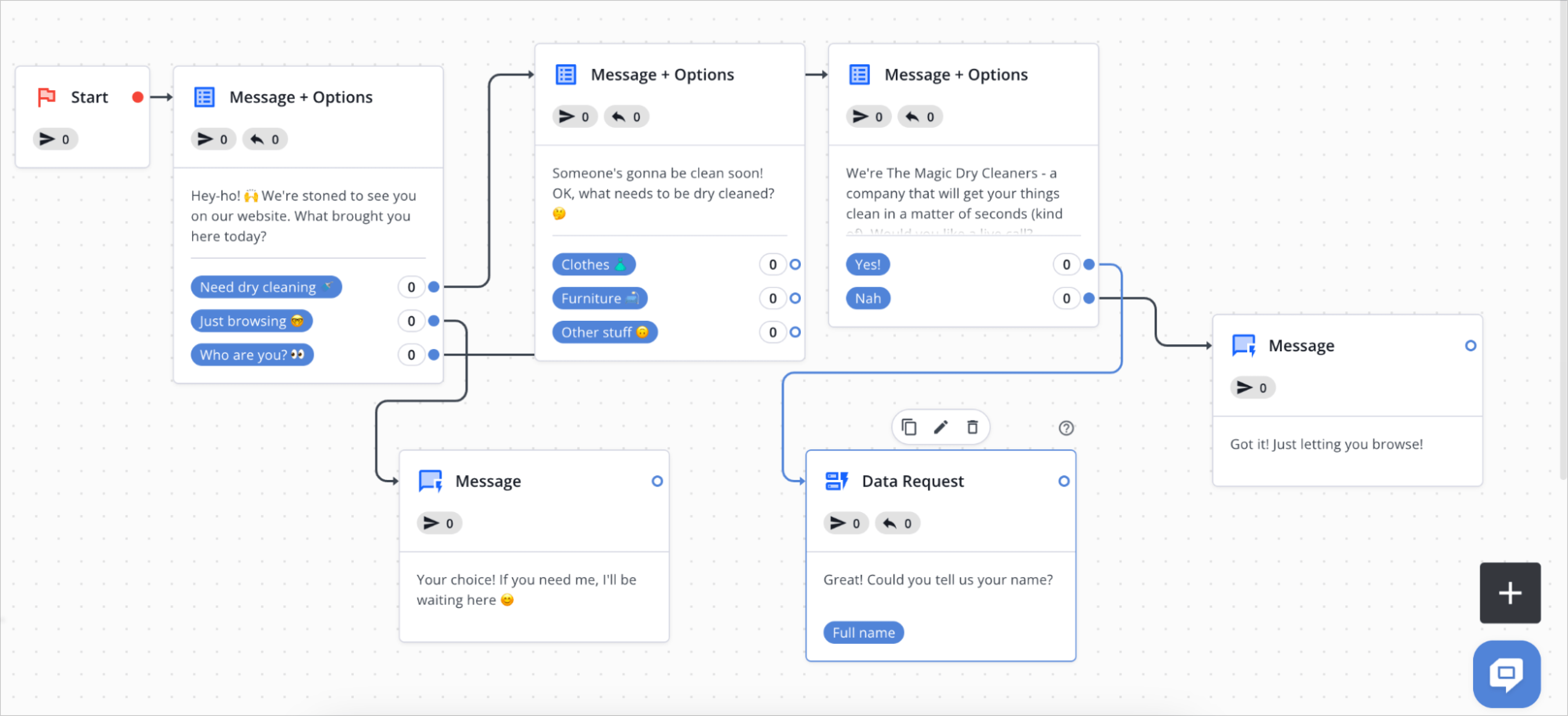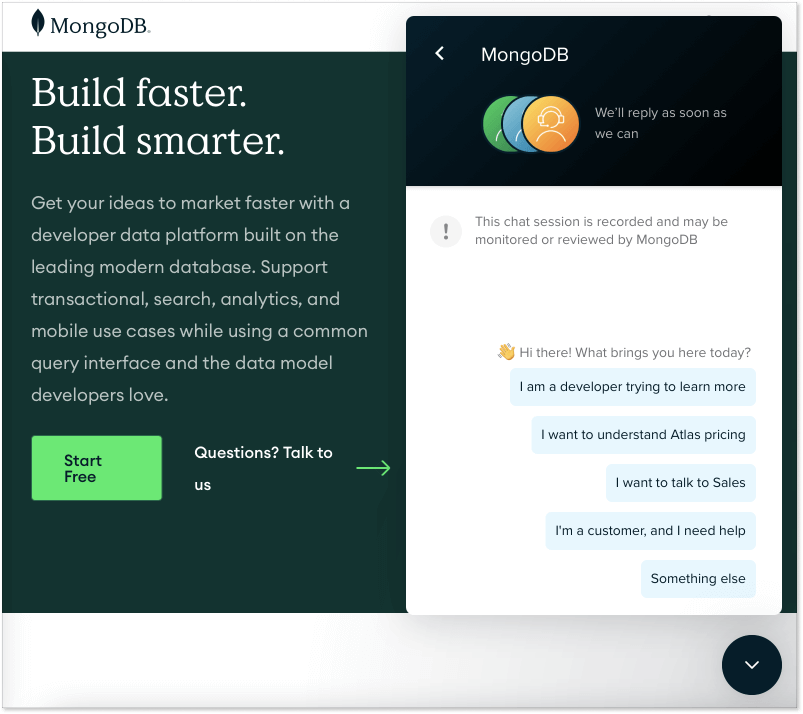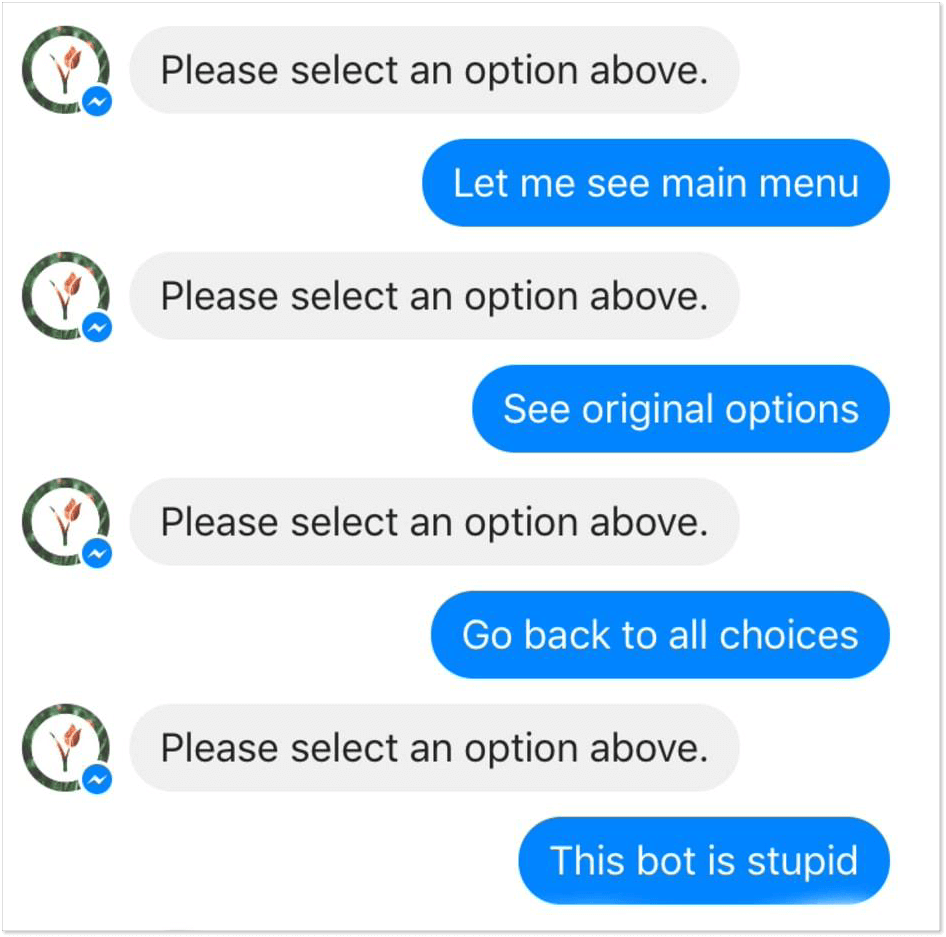Chatbot Pros and Cons: Which Ones Outweigh?
Go through our quick yet informative list of the pros and cons of chatbots. Build your strategy wisely 😇
Written by Tetiana Shataieva

At this point in our lives, it’s hard to estimate the chatbot pros and cons. Let alone the extent to which they have integrated themselves into our lives. That little window that pops up in the corner of a website page – that’s, most probably, a robot speaking. When you reach out to support because you need help, chances are it will greet you. By the way, Siri and Google Assistant are bots, too.
For businesses, this statistic has another important insight – it shows that people are getting used to encountering virtual assistants when they communicate with companies and, sometimes, they even expect to. That’s just a fancy way of saying that if you are in a customer-driven business and do not have a chatbot yet, it’s high time to get one.
Today, I will help you make this decision by outlining the pluses and minuses that you should take into account (spoiler: the pros still outweigh the cons, when one sets up the chatbot smartly).
What are chatbots?
Chatbots are software that imitate human conversation. There are various chatbot types, from the simplest ones responding to the user’s choice of options and specific keywords to the most advanced ones sitting on top of powerful AI algorithms, where they can carry a dialogue almost like a human being.
AI-based bots can learn from their conversations with users, fine-tuning their communication “skills”.
Simple rule-based bots greet the user with a range of options, offering to select the type of assistance the user needs. After that, the conversation progresses along the predefined “tree” – at each step, the user makes a new choice taking them to the corresponding “branch”.
In most cases, a chatbot redirects the user to a web page containing the information the user needs – a knowledge base article, an FAQ item, a product catalog listing, the company’s delivery and payment conditions, or any similar resource. Sometimes, a bot transfers the dialogue to a human agent if the customer requests it or if the issue is too complex for the bot to resolve.
This is, for example, how the HelpCrunch chatbot on a website may work. The image below shows its under-the-hood mechanics and typical opening script with several options for the user to choose from and the bot’s corresponding actions.

What are the pros and cons of chatbots?
The practice shows that for the majority of customers’ common questions or queries, almost all types of chatbots fit the task properly. However, rule-based bots excel in this endeavor. They can make a true difference in the sales and support team’s everyday work. However, as usual, the pros come with the cons, and this is what we are going to talk about.
Pros of chatbots
- 24/7 availability
Being pieces of code, they do not need days off, vacations, and lunch breaks. They are available round-the-clock and can handle user requests at any time.
On the one hand, if your team also has a 24/7 working schedule, a virtual assistant will relieve some pressure on your employees in customer interaction by taking over simple tasks. On the other hand, if you only have fixed working hours, complex chatbots (the ones that are powered by Natural Language Processing and Artificial Intelligence) can handle requests outside them.
Besides, they could resolve issues by directing users to self-service resources or acknowledge their inquiries with a promise to get back at them as soon as possible (BTW, an excellent email-harvesting method, don’t you think?)
- Cost reduction
Chatbots can handle full conversations and numerous customer questions without human interaction almost 69% of the time. Just think about it, this piece of software takes over two-thirds of inquiries without involving agents. In practical terms, it may mean more time off for your team members, a reduction in operational costs, more effective problem-solving (no need to spread yourself too thin), less overtime, and, ultimately, no need to increase your support team.
In addition, by lightening the load on your team, chatbots make their work less stressful and, as a result, more satisfactory. Higher employee satisfaction – higher employee retention – fewer new hires – lower training and onboarding costs. Bingo!
- Faster request resolution
In handling simple issues, chatbots are definitely much faster than an actual human. It will only take them a split second to pull up a link to the webpage that has the information the customer needs.
As a result, questions like “What are your delivery terms?”, “How can I reset my password?”, or “What should I do to upgrade to another pricing plan?” are resolved in a blink of an eye. Customer satisfaction with such quick assistance is higher, which contributes to consumer engagement and faster customer service.
- Lower bounce rate
Bounce rate is the share of users who leave the website after visiting a single page. An average bounce rate is between 45 and 50%, and, surely, every business is trying to lower it by all means possible.
A chatbot can help here, too. When placed on a website’s landing page, it may hold the visitor’s attention with further browsing suggestions long enough to persuade them to explore a bit more. The robot guides the user across the website, making their initial experience smoother and more enjoyable.
See how the MongoDB website uses a chatbot on its landing page. It invites visitors to choose one of the available options to go on with the conversation.

Cons of chatbots
The disadvantages of chatbots should not discourage you from using them. Forewarned is forearmed. If you start building your bot with possible drawbacks in mind, you might end up reducing its effect to the minimum.
- Hardly useful for complex issue resolution
No matter how human-like chatbots may sound, they are not human. They cannot get beyond the preprogrammed scripts and predefined suggestions. As a result, a chatbot can only handle the most common, straightforward issues for which they have standard solutions. Anything that is not standard is immediately over their “head”.
What can you do about it? Frankly, nothing, except including a “Connect to an agent” option into the chatbot script and having your team ready to pick up the conversation. Just accept that bots are meant for handling simple tasks – which are the majority of all customer requests – and leave the complex ones to humans. If you are still debating whether you should implement a chatbot or live chat, here’s an argument that you should have both.
- Inability to detect the customer’s mood
Chatbots only recognize keywords or phrases and cannot feel the emotional nuances of the customer’s remarks. They only provide satisfactory answers that are stored in their database and cannot express empathy or understanding.
Sometimes, this can annoy the customer, especially if they have opened the chat to complain about an issue. They expect personalized treatment and mechanical responses may deepen their frustration even more.
The solution? It’s the same as in the previous point – always leave the customer an option to connect to a human agent. Also, write the chatbot script in a neutral tone. Overly cheerful remarks should not clash with the customers’ mood.
- Misunderstanding or failure to understand the customer’s remarks
When a customer asks a question a bot is not programmed for, it is most likely not to understand it. In an attempt to provide an answer, it responds with remarks it finds suitable. The results of such attempts can often be found in chatbot failure collections that you can admire on the Internet (looks like someone didn’t care much about chatbot UI).
You can avoid such situations by programming as many scenarios or keywords as you can. Try to think of all possible ways to phrase a request and put them in the bot’s database. Get your team together and brainstorm for as many combinations as they can think of. This way,
your bot will be better prepared to hold conversations.
- Need of regular maintenance
This is not exactly a disadvantage but a reminder that you cannot just program a chatbot and forget about it. A virtual assistant should reflect the actual state of things in your company. So if you change your product, service, or procedure, make sure to update the bot accordingly. If you move or rename a page, make sure to update links in the bot scripts. It should always provide actual information to customers.
Moreover, by analyzing chatbot logs, performance reports, and customer feedback you can see where it fails. If you notice a certain pattern and a bot repeatedly misunderstands specific questions, add new phrases to its database.
You might also need to make updates related to the platform on which your chatbot is running. For instance, if you switch your website to WordPress, choose one of the best chatbots for WordPress.
To install a chatbot or not to install?
To install, by all means. A chatbot is going to increase the performance of your team and create positive customer experiences. Just make sure you take into account all the chatbot pros and cons and implement your bot wisely.





